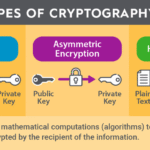Symmetric cryptography, a fundamental pillar of modern cybersecurity, has long been celebrated for its expedience and efficiency. Nevertheless, it also poses a multitude of challenges that merit scrutiny. The crux of symmetric cryptography lies in the fact that the same key is utilized for both encryption and decryption. Although this can be advantageous in specific contexts, the limitations and vulnerabilities inherent in this approach become evident under closer examination.
First and foremost, the central issue surrounding symmetric cryptography is the management of keys. In any secure communication channel, both parties must possess the identical key. This requirement creates a logistical headache, particularly in environments where many users need to interact. The need for secure key distribution channels is paramount, yet coordinating this securely can be cumbersome. The more individuals involved in the communication, the more potential vectors for compromise. A single exposed key can lead to catastrophic breaches, allowing unauthorized entities access to sensitive information.
Additionally, the fundamental nature of symmetric systems makes them inherently less scalable than asymmetric alternatives. As the number of participants in a network increases, the number of keys required grows exponentially. In a scenario with ‘n’ participants, ‘n(n-1)/2’ unique keys would be necessary to facilitate secure one-on-one communication among all members. This complexity can overwhelm even the most robust security protocols, creating a fragile framework vulnerable to key management issues.
Next, we must examine the cryptographic strength of symmetric algorithms. While many symmetric key encryption methods exhibit impressive performance, they are not impervious to sophisticated cryptanalysis. As computational power grows and more advanced techniques emerge, certain symmetric algorithms, once deemed invulnerable, can succumb to brute-force attacks or more nuanced forms of analysis. As exemplified by the decline in trust surrounding the Advanced Encryption Standard (AES) as computational technology burgeons, reliance on symmetric solutions alone can precipitate vulnerabilities.
Conversely, the requirement to securely destroy keys after use is an additional burden. In the face of a breach or post-use doubts, secure key disposal techniques become requisite. This mandates a deeper understanding of cryptographic lifecycle management—vigorous protocols must be established to mitigate the risk of key recovery through various forensic techniques. Without meticulous management, the implications of weak key disposal can reverberate far beyond the immediate concern, leading to long-term data exposure and compromise.
Moreover, the aspect of non-repudiation is intrinsically deficient within symmetric cryptography. In environments demanding robust trust frameworks, the inability for one party to unequivocally prove their original actions—or for a party to deny them—creates a dilemma. This contrasts sharply with asymmetric cryptography, where digital signatures offer a compelling means of establishing identity, integrity, and authenticity. In transactions where disputes can arise, the shortcomings of symmetric systems can handicap resolution mechanisms, leaving parties questioning the veracity of claims.
Furthermore, we should consider the aspect of adversarial circumstances. State-level actors and organized cybercriminals often deploy advanced strategies to target symmetric keys, overpowering security measures with sophisticated tactics. The challenge of ensuring that all endpoints maintain a consistent security posture becomes a formidable endeavor. Key exposure risks in data-at-rest, for example, can be exacerbated by inadequate endpoint protection practices, culminating in significant vulnerabilities.
Furthermore, the time-sensitive nature of some data and potential operational hindrances associated with symmetric key exchanges can lead to severe delays. The necessity for parties to periodically update or rotate keys compounds the issue, as the synchronization of such updates can stymie operational efficiency. In scenarios requiring rapid communication or immediate authentication, the constraints inherent in symmetric key exchanges may well hinder timely interactions.
Looking ahead, a paradigm shift may be warranted. Instead of solely relying on symmetric mechanisms, the integration of asymmetric cryptography with symmetric methods can yield a safer and more effective cryptographic framework. Hybrid solutions harness the strengths of both approaches—achieving speed and efficiency from symmetric systems while leveraging the robustness of asymmetric public key infrastructures for secure key exchange and authenticity.
In conclusion, while symmetric cryptography holds undeniable advantages, it is imperative to consider its various limitations. From key management complexities to non-repudiation issues and challenges in scalability, the option should not be heralded as a panacea for all encryption needs. In a world of advancing technology and increasing cyber threats, adopting a multifaceted approach that embraces both symmetric and asymmetric paradigms may provide a more resilient defense against potential adversaries. The exploration of hybrid models and sophisticated key management strategies will ultimately redefine our interaction with cryptographic principles, leading the way to fortified security architectures for the future.









Leave a Comment